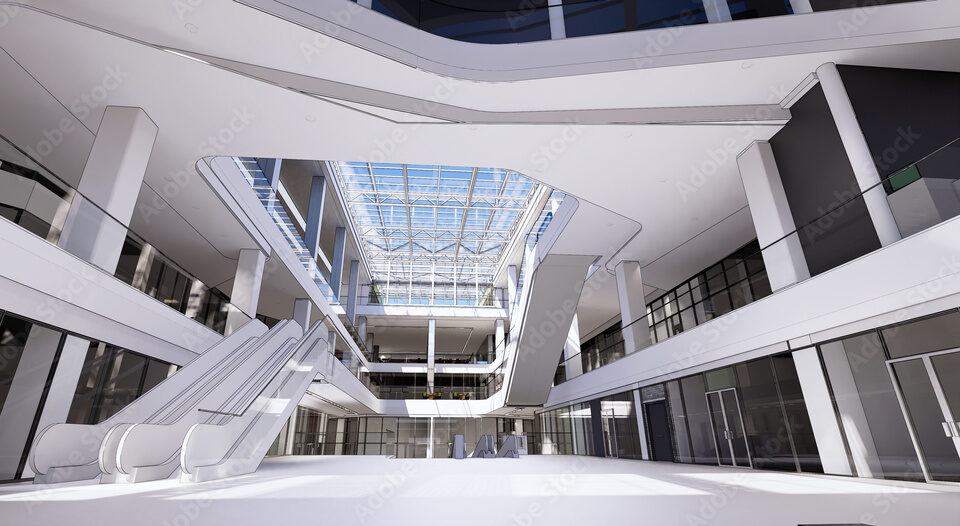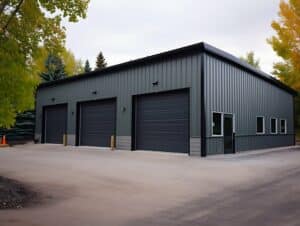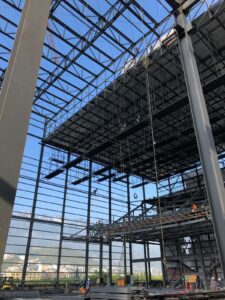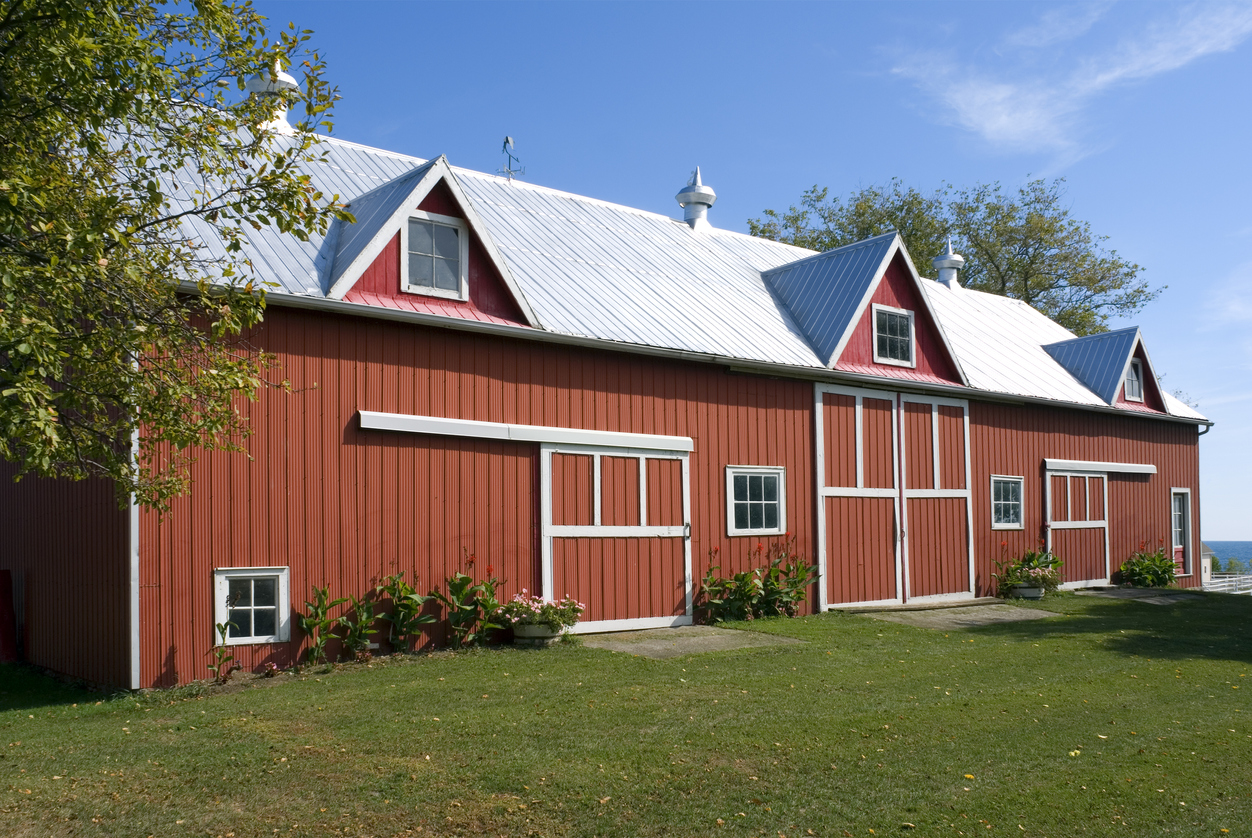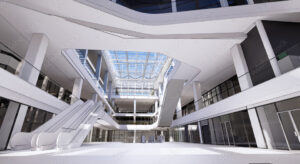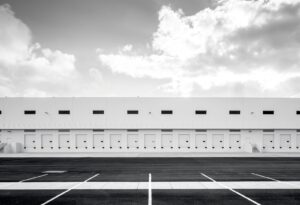Considering the thought of building a mall and the associated cost? Building a mall is not only a significant investment but also a complex undertaking that involves various construction costs.
As of the fourth quarter of 2023, there were 11.1 million square feet of shopping centers under construction. Additionally, malls comprised a further 2.5 million square feet of retail construction.(Statista)
Understanding the costs of building a mall is crucial for developers, investors, and stakeholders.
In this article, we will delve into the intricacies of mall construction expenses, including the basics of mall construction, breaking down costs, additional expenses, financing options, and cost-saving strategies.
Table of Contents
- Understanding the Basics of Mall Construction
- Breaking Down the Costs of Building a Mall
- Additional Costs in Mall Construction
- Financing Options for Mall Construction
- Cost-Saving Strategies in Mall Construction
- Conclusion
- Frequently Asked Questions

Understanding the Basics of Mall Construction
Mall construction involves a meticulous planning process that takes into account several factors. One of the fundamental considerations is the importance of location. The ideal location should have high visibility, accessibility, and ample parking facilities.
Additionally, the location’s potential for foot traffic and proximity to major roads, public transportation, and densely populated areas play a significant role in the success of a mall.
There are various types of malls, each with its unique costs to build them. Regional malls, often characterized by their large size and extensive offerings, tend to have higher construction expenses compared to community or neighborhood malls.
Strip malls, which typically house multiple smaller retailers, generally have lower construction costs due to their smaller scale.
When it comes to building a mall, architects and designers play a crucial role in creating a space that is not only visually appealing but also functional and cost effective. The layout of a mall is carefully designed to optimize the flow of foot traffic, create inviting spaces for shoppers, and provide easy access to stores and amenities.
Factors such as natural lighting, signage placement, and seating areas are all meticulously planned to enhance the overall shopping experience for visitors.
Moreover, sustainability is becoming an increasingly important aspect of mall construction. Green building practices, such as using energy-efficient materials, incorporating renewable energy sources, and implementing water conservation measures, are being embraced by developers to reduce the environmental impact of malls.
Designing eco-friendly malls not only benefits the environment but also attracts environmentally conscious consumers who prefer to support businesses that prioritize sustainability.
Check out: Metal Mall Buildings: What Are They?
Breaking Down the Costs of Building a Mall
When estimating the costs of building a mall, it is important to consider several key components.
Land acquisition and preparation costs encompass expenses related to acquiring suitable land and preparing it for construction. This may involve site clearing, earthwork, utility connections, and infrastructure development.
Construction materials and labor costs account for a significant portion of the overall expenses.
These include the cost of concrete, steel, structural elements, and finishing materials. Labor costs cover wages and benefits for construction workers, technicians, and project managers.
Interior design and furnishing expenses are additional costs that contribute to the overall budget.
Creating an attractive and functional interior space requires careful planning, architectural design, and the procurement of fixtures, lighting, and other decorative elements.
Another crucial aspect to consider when budgeting for a mall building project is the cost of obtaining necessary permits and approvals. Before any construction can begin, developers must navigate a complex web of regulations and requirements set forth by local government authorities.
This process involves submitting detailed plans, environmental impact assessments, and securing permits for zoning, building, and occupancy.
Furthermore, a significant expense that is often overlooked is the cost of marketing and promoting the mall once the building is completed.
Developing a comprehensive marketing strategy to attract tenants and customers is essential for the success of the mall. This may involve advertising campaigns, promotional events, and hiring marketing professionals to create a strong brand presence in the market.
Additional Costs in Mall Construction
Aside from the fundamental expenses mentioned earlier, there are other important costs to consider when building a mall. Licensing and permit costs are necessary for obtaining the required approvals and permits from local authorities. These costs can include application fees, inspections, and compliance-related expenses.
Infrastructure and utility costs entail the installation of necessary infrastructure, such as water supply systems, electrical wiring, sewage systems, and telecommunications networks. Utility costs may also involve connecting to existing power grids, water lines, and sewer systems.
Another significant cost to factor in is the expenses related to environmental impact assessments and mitigation measures. Before construction can begin, environmental studies must be conducted to assess the potential impact of the project on the surrounding ecosystem.
This process may involve hiring environmental consultants, conducting surveys, and implementing measures to minimize any negative effects on the environment.
In addition to the physical construction costs, it’s essential to consider the expenses associated with security measures. Malls require robust security systems to ensure the safety of visitors, tenants, and employees. This includes installing surveillance cameras, and access control systems, and hiring security personnel. Security costs can vary depending on the size of the mall and the level of security required after completing the building.
Financing Options for Mall Construction
Developers and investors typically explore various financing options to fund mall construction projects. Bank loans and interest rates are frequently utilized to secure financial resources. It is essential to carefully evaluate the terms, interest rates, repayment periods, and any associated fees when opting for loans.
Investor funding and partnership agreements offer an alternative route for financing. Finding strategic partners or investors who believe in the project’s potential can provide additional capital and expertise.
Developing a comprehensive business plan that showcases the estimated return on investment and potential revenue streams is crucial for attracting investors.
Another financing option that developers often consider is crowdfunding. Crowdfunding platforms allow developers to raise funds from a large number of individual investors who contribute small amounts of money toward the project.
This method not only provides financial support but also helps in creating a community of supporters for the mall construction.
Furthermore, government grants and incentives can also play a significant role in financing mall construction projects. Many governments offer grants, tax credits, or subsidies to encourage the development of commercial properties that contribute to economic growth and job creation.
Developers can explore these opportunities to reduce the overall financial burden of the project and enhance its feasibility.
Did You Know?
The Small Business Administration (SBA) provides significant loan programs for shopping center financing. The 7(a) loan program offers up to $5 million, covering both land and building costs. The 504 loan is excellent for purchasing land, long-term machinery, and existing buildings.

Cost-Saving Strategies in Mall Construction
Implementing cost-saving strategies is crucial for maximizing the return on investment in mall construction. Efficient design and space utilization techniques can minimize wasted space and optimize floor area. This may involve adopting open-concept layouts, flexible store designs, and strategic placement of amenities.
Sustainable materials and energy efficiency initiatives not only contribute to environmental conservation but also reduce long-term operating costs. Incorporating energy-efficient systems, such as LED lighting, solar panels, and smart HVAC systems, can significantly reduce energy consumption and maintenance expenses.
When it comes to the design phase of mall construction, architects and engineers play a critical role in ensuring that the layout is not only aesthetically pleasing but also functional and cost-effective.
By utilizing computer-aided design (CAD) software and conducting thorough space planning analyses, professionals can create efficient layouts that maximize retail space while minimizing construction costs.
Furthermore, the construction phase of a mall project involves coordination among various contractors, subcontractors, and suppliers. Project managers must oversee the construction timeline, monitor budget allocations, and ensure that quality standards are met.
By implementing lean construction principles and fostering strong communication among team members, delays and cost overruns can be minimized.
Conclusion
As we have explored in this article, the costs of building a mall encompass various components, including land acquisition, construction materials, labor, interior design, and additional expenses like licensing and infrastructure.
Financing options, such as bank loans and investor funding, provide avenues to secure the necessary funds, while cost-saving strategies like efficient design and sustainable materials help optimize the investment.
Through careful planning and prudent financial decisions, developers and investors can navigate the complex landscape of mall construction and create thriving retail spaces.
SteelCo has 23+ years of experience dropshipping Pre-Engineered Metal Building (PEMB) materials, such as those for commercial, retail, and mixed-use buildings across the US.
As a locally awarded General Contractor, our expertise also extends to comprehensive commercial design-build and construction projects across Georgia for a wide range of client industries and asset classes.
Our general contracting expertise can take your projects from concept to reality, customizing them to reflect your greatest needs and wants.
—————————
Frequently Asked Questions
What’s the average cost of building a mall?
The average cost to construct a medium-sized shopping mall in the United States is approximately $24.9 million, exclusive of expenses associated with purchasing land and clearing the site.
What factors influence the cost of building a mall?
The cost of building a mall can be influenced by various factors such as the size of the mall, site conditions, construction techniques, tenants, amenities, and location. For example, in some cases, the need for demolition can significantly raise the total cost of the project.
What are the different types of malls and their associated costs?
A small strip mall can cost around $2.5 million for approximately 10,000 square feet of space, while high-end deluxe supercenters can cost up to $225 million and include multiple levels, anchor stores, restaurants, and a movie theater.
What is the cost per square foot for building a mall?
The cost per square foot of building a mall can vary widely depending on several factors, such as location, materials used, design complexity, and the type of mall being constructed. On average, the construction cost for strip malls typically ranges between $200 and $300 per square foot.
Check out this related article:

